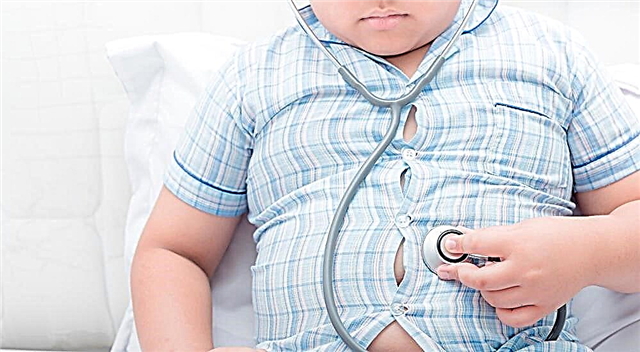About the disease
The term brachydactyly came to us from the Greek language and literally translates as "short finger". This anomaly manifests itself in underdevelopment, deformation of the digital phalanges and shortening of the hand or foot.
When one or more metatarsal bones of the foot are damaged, the term "brachymetatarsia" is used. In this variant of the disease, the finger itself remains of normal size, but it is located more proximal and higher than the rest.
Statistical data indicate a low incidence of short-toed in the general structure of the incidence of newborns. Only 3 children out of 200 thousand born babies are given this diagnosis. At the same time, among genetic diseases, short-toed is considered a frequent defect and accounts for 24% of the total number of hand and foot anomalies.

Causes
The "culprit" of the development of the disease is a mutant gene that was passed on to the baby from one of the parents. The disease is inherited in an autosomal dominant manner, which means a high risk of having a child with this problem if the mother or father has an anomaly. The onset of the disease is not associated with the sex of the child; brachydactyly manifests itself with the same frequency in both girls and boys.
Currently, the cause of the disease is a mutation in one of the 8 genes. Depending on the severity of the defect, the clinical picture and manifestations of the disease are also different. Often, damage to a DNA site manifests itself not only in short-fingered, but also combined with impaired mobility of the joints of the hand (symphalangism) and various variants of fusion of the fingers (syndactyly), underdevelopment, flattening of the nail phalanges.
The manifestation of the disease
Usually, the doctor noticed short-fingeredness even in the maternity hospital. But there are cases when at birth the defect is not very pronounced, the pathology is attributed to the individual feature of the child. With age, brachydactyly becomes more pronounced and can cause both physical and psycho-emotional discomfort to the baby.
There are several clinical variants of the disease:
Type A
This type of brachydactyly is characterized by damage to the middle phalanges, changes in the nail plates and curvature of the fingers. Depending on the location of the pathology, type A, in turn, is divided into 6 subtypes.
Type B
In addition to the typical for type A lesions of the middle phalanges of the fingers, type B is also characterized by the underdevelopment or absence of the nail phalanges of all fingers and toes. Syndactyly is often observed - fusion of II and III fingers.

Type C
This variant of the disease is often combined with a lag in growth and mental development of the patient. On the side of the bone tissue, there is a shortening of the middle and proximal phalanges of the II and III fingers, their fusion, impaired mobility of the hands and feet. There are also changes on the feet - the first toe looks shortened due to the underdevelopment of the metacarpal bone.
Type D (brachymegalodactyly)
One of the mild types of pathology manifests itself in the shortening of the first fingers and toes due to the abnormal structure of the distal phalanx.
Type E
This type of the disease is rare and is characterized by underdevelopment of the metacarpal and metatarsal bones of the hands and feet.
The most common variants of the disease are types D and A3. Often these defects appear in isolation and do not bring significant health troubles. Problems in people with brachylactyly are in choosing the right shoes, gloves, and reduced limb mobility. Due to external defects, a person may feel inadequate, shy. Changing the shape and mobility of the limbs limits the choice of profession in the future.

Diagnostics
The disease can be detected even during the gestation of a child, confirmation of the diagnosis occurs after the baby is born. Therefore, the identification of pathology consists of several stages:
- genetic counseling.
Families in which there have been cases of the birth of a child with a pathology of the skeletal system must be consulted with a geneticist during pregnancy planning. The doctor will help calculate the risk of having a child with this anomaly, will recommend examining the genotype of the parents to make sure that there are no mutations;
- examination of a pregnant woman.
With the help of ultrasound, the doctor can detect and evaluate the pathology even during the gestation of the child. In addition, during the study, the state and function of other organs and systems, the development of the baby are assessed.
Isolated brachydactyly is not considered a serious defect and does not require termination of pregnancy, but it serves as a reason to suspect that the child has a hereditary syndrome. Many of them (Down syndrome, Poland, Beymond and others), in addition to the main manifestations, malformations are accompanied by shortening of the fingers and toes.
To suspect a dangerous illness in a child, the ultrasound results are evaluated along with biochemical screening. If necessary, invasive research methods are carried out that can establish with an accuracy of 99% the presence of a hereditary syndrome in a baby;
- examination of the baby after birth.
Examination of a child consists of collecting an anamnesis of the disease, a thorough examination of the baby's osteoarticular system, instrumental diagnostic methods. The simplest and most reliable way to determine the pathology is X-ray examination. If necessary, your doctor may recommend a CT scan.
In cases of a doubtful diagnosis, to exclude a hereditary syndrome in a baby, karyotyping is performed. With this method, violations in the baby's genome, structure and number of chromosomes are determined.

Should brachydactyly be treated?
Although it is possible to suspect an ailment even during pregnancy, methods of influencing the gene defect have not yet been developed. After the birth of the baby, it is obligatory to consult the baby with a pediatric orthopedic traumatologist. The question of the need and scope of treatment is decided individually in each case.
Common options, such as type D, do not have a pronounced negative effect on the baby's health. The function of the finger and hand is not significantly impaired, and the anomaly is a cosmetic defect. At the same time, combined pathology with a violation of the structure of the hand and fusion of bone structures requires surgical intervention, as the only effective method of treating brachydactyly.
The main methods of therapy for pathology of the skeletal system:
- conservative treatment.
To restore the function of the hands and feet, massage, physiotherapy, physiotherapy are used. With the help of these methods, it is impossible to completely get rid of the pathology, but conservative treatment will help strengthen the ligamentous apparatus, improve the motor activity of the limbs;
- surgical methods.
The operation is possible when the child reaches the age of three. The choice of the method of treatment is carried out by the doctor, taking into account the state of the bone system of the crumbs. The main tasks that the orthopedic doctor sets for himself are correction, lengthening of the abnormal part of the limb, restoring its function and improving the appearance of the hand or foot.
To obtain the desired result, microsurgical operations are performed: pollicisation, finger autotransplantation. It is possible to use the Ilizarov apparatus for lengthening deformed phalanges, restoring limb length.
Forecast and prevention
Since this disease is hereditary, it is impossible to prevent the development of brachydactyly in a baby whose parents are carriers of the mutant gene. A geneticist will help to calculate the risk of having a child with a pathology, but there are no methods for treating the damaged DNA yet. Prevention consists in the prevention of closely related marriages, medical and genetic counseling of families who have had cases of hereditary diseases.
The prognosis of the disease depends on the form and severity of the symptoms of the disease. In most cases, the child is completely cured after surgery. Conservative methods have an indirect therapeutic effect and complement the main, surgical method of treatment.

Conclusions
Brachydactyly is a disease caused by a genetic defect and manifested by a change in the size of the fingers and hands. Obvious cases of this pathology are determined immediately after the birth of the child and their diagnosis is not difficult. But in some cases, a congenital defect is regarded as an individual feature of the baby and does not bring him significant inconvenience.
To determine the need to treat this ailment, it is imperative to consult with an orthopedic traumatologist, who will tell you the further course of the disease and the amount of necessary treatment. Today, the only method that can cure a child is surgery.



